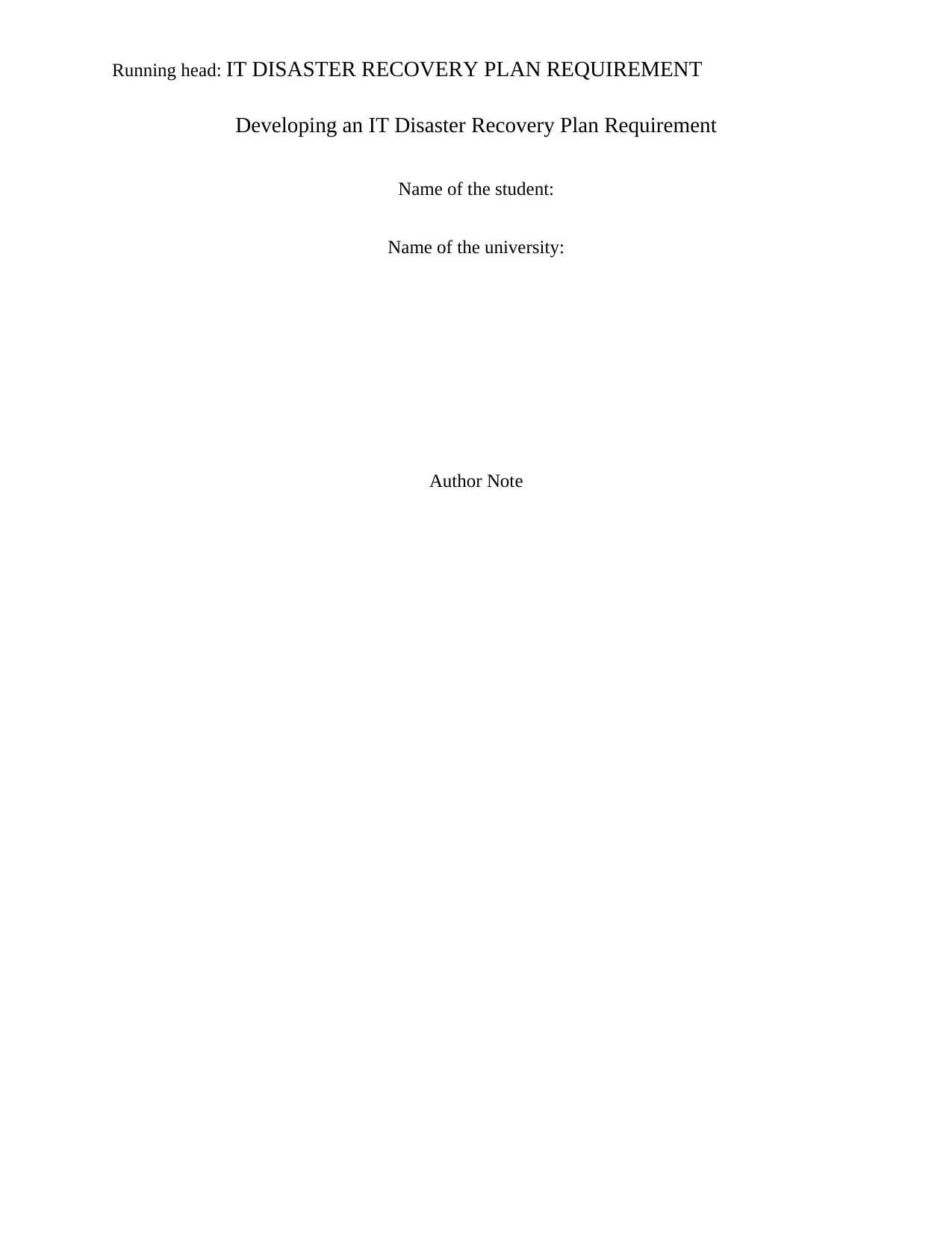IT Disaster Recovery Plan Requirement: Challenges and Lessons Learned
VerifiedAdded on 2020/04/29
|6
|1188
|463
Report
AI Summary
This report provides an in-depth analysis of the requirements for developing an IT disaster recovery plan. It begins by outlining the core components of such a plan, emphasizing the importance of structured methods to address unplanned events that threaten IT infrastructure, including networks, software, hardware, personnel, and processes. The study identifies key challenges, such as cloud strategy development, modernizing legacy applications, retaining IT talent, and managing cooling, power, and space. It also highlights the rising risks of prolonged outages and data loss, emphasizing the need for modern recovery and backup solutions. Furthermore, the report explores the increasing frequency of both human-made and natural disasters and their impact on businesses' reliance on technology. It analyzes the implications of human errors and traditional approaches' ineffectiveness, including infrequent data backups and insufficient resources. Finally, the report examines disaster simulation, including physical, logical, and malicious events, and offers real-world examples like F5 networks and Goodwill of Indiana, detailing recovery times and leveraging specific solutions. The overall conclusion stresses the importance of integrating IT disaster recovery plans with business continuity planning, establishing recovery time objectives, and developing technology recovery methods.
1 out of 6












![[object Object]](/_next/static/media/star-bottom.7253800d.svg)